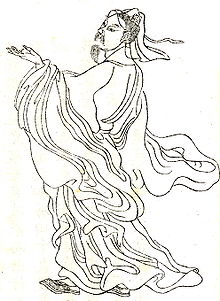This article is about the year 406. For other uses, see 406 (disambiguation). Calendar year
| Millennium: | 1st millennium |
|---|---|
| Centuries: | |
| Decades: | |
| Years: |
| 406 by topic |
|---|
| Leaders |
| Categories |
| Gregorian calendar | 406 CDVI |
| Ab urbe condita | 1159 |
| Assyrian calendar | 5156 |
| Balinese saka calendar | 327–328 |
| Bengali calendar | −188 – −187 |
| Berber calendar | 1356 |
| Buddhist calendar | 950 |
| Burmese calendar | −232 |
| Byzantine calendar | 5914–5915 |
| Chinese calendar | 乙巳年 (Wood Snake) 3103 or 2896 — to — 丙午年 (Fire Horse) 3104 or 2897 |
| Coptic calendar | 122–123 |
| Discordian calendar | 1572 |
| Ethiopian calendar | 398–399 |
| Hebrew calendar | 4166–4167 |
| Hindu calendars | |
| - Vikram Samvat | 462–463 |
| - Shaka Samvat | 327–328 |
| - Kali Yuga | 3506–3507 |
| Holocene calendar | 10406 |
| Iranian calendar | 216 BP – 215 BP |
| Islamic calendar | 223 BH – 222 BH |
| Javanese calendar | 289–290 |
| Julian calendar | 406 CDVI |
| Korean calendar | 2739 |
| Minguo calendar | 1506 before ROC 民前1506年 |
| Nanakshahi calendar | −1062 |
| Seleucid era | 717/718 AG |
| Thai solar calendar | 948–949 |
| Tibetan calendar | 阴木蛇年 (female Wood-Snake) 532 or 151 or −621 — to — 阳火马年 (male Fire-Horse) 533 or 152 or −620 |

Year 406 (CDVI) was a common year starting on Monday of the Julian calendar. At the time, it was known as the Year of the Consulship of Arcadius and Probus (or, less frequently, year 1159 Ab urbe condita). The denomination 406 for this year has been used since the early medieval period, when the Anno Domini calendar era became the prevalent method in Europe for naming years.
Events
By place
Roman Empire
- Radagaisus is forced to retreat into the hills of Fiesole. There he tries to escape, but is captured by the Romans.

- August 23 – Radagaisus is executed; 12,000 "barbarians" are incorporated into the Roman army, or sold as slaves.
- Autumn – The remaining Roman legions in Britain decide to mutiny. The usurper Marcus is proclaimed emperor.
- The Vandals, led by Godigisel, are intercepted and defeated by the Franks under Marcomir. Godigisel is killed in battle and succeeded by his son Gunderic.
- December 31 – Vandals, Alans and Suebians cross the Rhine at Mogontiacum (modern Mainz), beginning an invasion of Gaul (traditional date, this may have occurred in 405).
Asia
- Faxian, Chinese traveler, arrives in India. He visits the major seats of Buddhist learning (Udyana, Peshawar, and Taxila).
- Hanzei succeeds his brother Richu, and becomes the 18th emperor of Japan in the traditional order of succession.
By topic
Agriculture
- Cultivation of rye, oats, hops, and spelt (a wheat used for livestock feed) is introduced in Europe by the native Vandals, Alans, and Sciri, who also introduce a heavy wheeled plow to be used for farming.
Religion
- Stained glass is used for the first time in churches in Rome.
Births
- Attila the Hun, ruler of the Hunnic Empire (approximate date) (d. 453)
- Lu Xiujing
- Shao Di, emperor of the Liu Song dynasty (d. 424)
Deaths
- August 23 – Radagaisus, Gothic king
- Alban of Mainz, priest and martyr (approximate date)
- Godigisel, king of the Vandals
- Gu Kaizhi, Chinese painter (b. c. 344)
- Zhang Tianxi, ruler of Former Liang (b. 346)
References
- Heather, Peter J. (2006). The fall of the Roman Empire: a new history of Rome and the barbarians. Oxford: Oxford Univ. Pr. p. 194. ISBN 978-0-19-515954-7.
- Ponsonby-Fane, Richard (1915). Hansho (406–410). Ponsonby Memorial Society. p. 11.
{{cite book}}:|work=ignored (help) - Lü, Pengzhi (January 2, 2018). "The early Lingbao transmission ritual: a critical study of Lu Xiujing's (406–477) Taishang dongxuan lingbao shoudu yi". Studies in Chinese Religions. 4 (1): 1–49. doi:10.1080/23729988.2018.1429141. ISSN 2372-9988. S2CID 166216434.